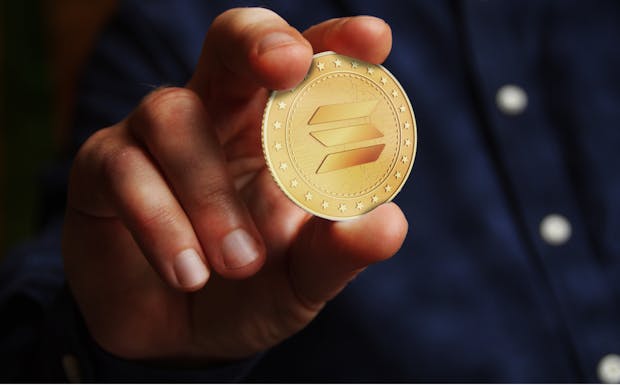will the real Ethereum killer please stand up?

will the real Ethereum killer please stand up?
will the real Ethereum killer please stand up?
the cryptocurrency revival of recent weeks came to a screeching halt on a historic day for the technology. El Salvador’s rollout of Bitcoin as legal tender on September 7, the first in the world, coincided and partially caused a near-20% drop in the token’s price. the rest of the market followed the largest cryptocurrency’s movement, as it normally does.
but among a sea of red, there was a lone (major) exception: Solana. its ~450% surge since the beginning of August has seen it overtake Dogecoin (remember?) as the seventh-largest cryptocurrency by market capitalisation ($61 billion). with the aim of becoming the new Ethereum, it has its sights set on climbing much higher.
what’s the big deal?
the concept for Bitcoin, a decentralised currency based on cryptography, was proposed by an anonymous person Satoshi Nakamoto in 2008. followed the global market crash, and aimed to fix some ailments of the traditional financial system. it would use “blockchain” technology i.e. a permanent ledger of all transactions supported by machines around the world, instead of a big bank. but it had its own limitations. It is slow, energy intensive, and thus terrible for the environment.
to fix this, the Ethereum blockchain was developed. it could process transactions at a speed faster by multiple magnitudes, consumed lesser energy, and most importantly supported other decentralised applications (DApps) being built on its blockchain. however, it soon ran into the problem of network congestion, resulting in higher and higher transaction fees.
meet the killers
Ethereum may not have hit bullseye, but it is pretty close to that mark. thus, while Bitcoin is seen as the OG cryptocurrency and a form of digital gold (due to its fixed supply), Ethereum is seen as the technology to beat. there are many contenders offering similar features such as the ability to build DApps, but with other advantages. the biggest among them are Cardano, Polkadot, and Solana.
Cardano is currently focused on research and developing smart contracts which will boost the development of DApps. it is currently the third largest cryptocurrency ($82 billion), behind Bitcoin and Ethereum.
Polkadot uses a ‘sharded’ chain mechanism to improve security, and aims to be the go-to technology for decentralised finance (DeFi) applications. it’s the tenth largest crypto by market cap ($28 billion).
Solana, which was launched just over a year ago, focuses on transaction speed. at present, it can process over 2,000 times as many transactions as Ethereum in the same amount of time. transaction fees are a negligible fraction (<0.00001%) of Ethereum. that perhaps explains why Solana has become a darling of NFT platforms and seen its price rocket 18,000% since launch.
of course, there’s plenty of space for all these ‘killers’ to coexist. as long as they don’t get knocked out by the upcoming Ethereum 2.0 upgrade.



